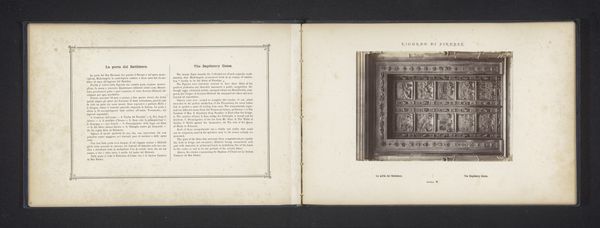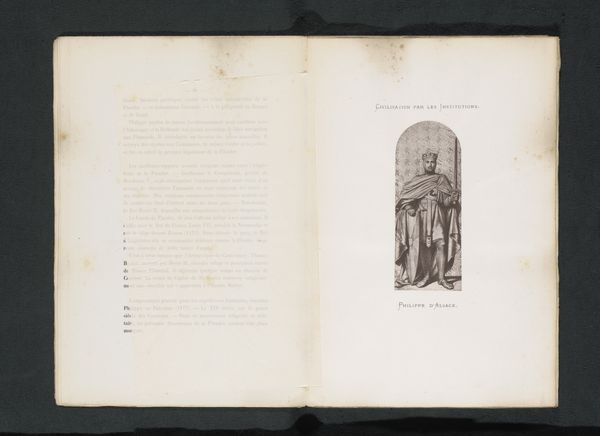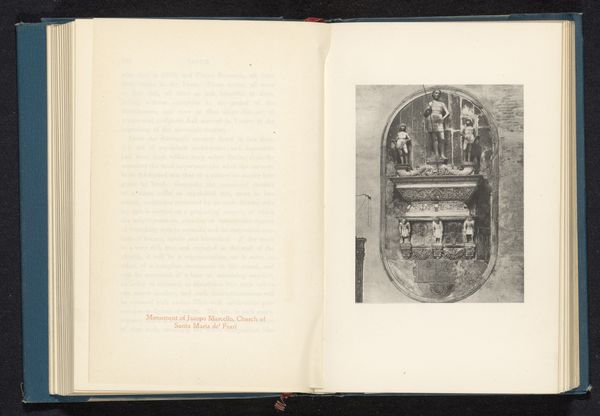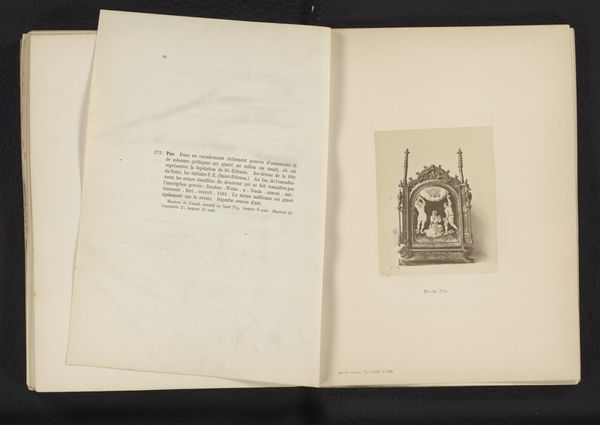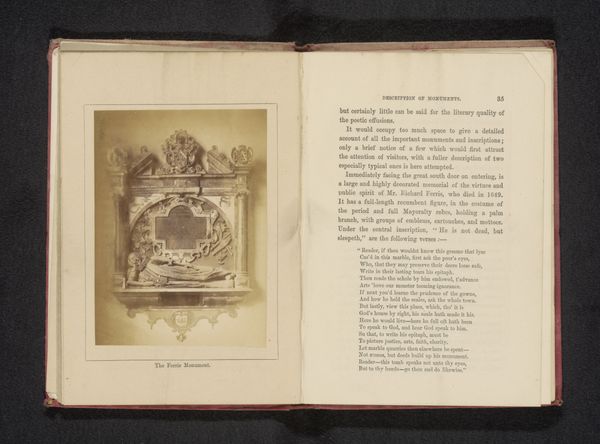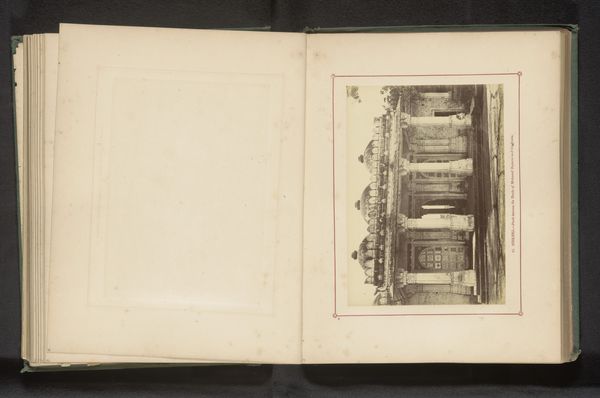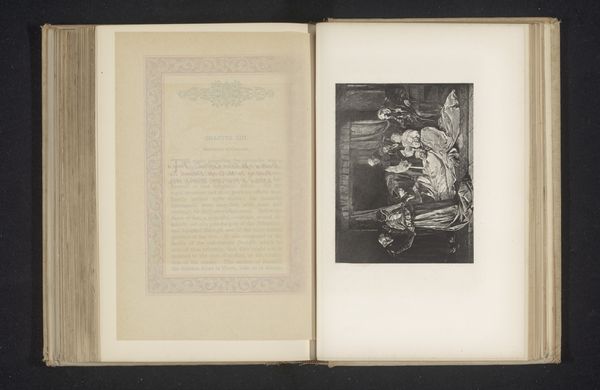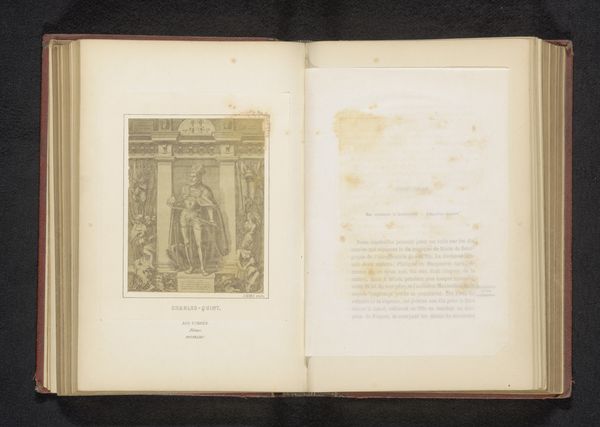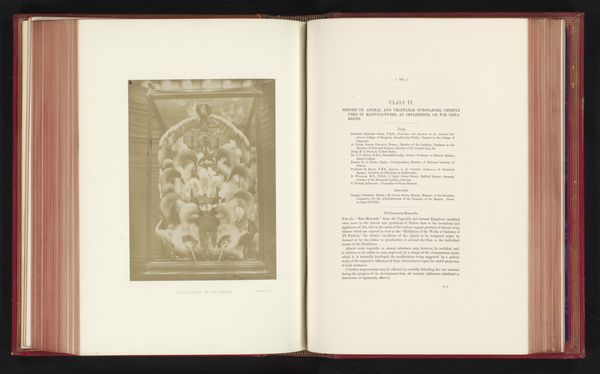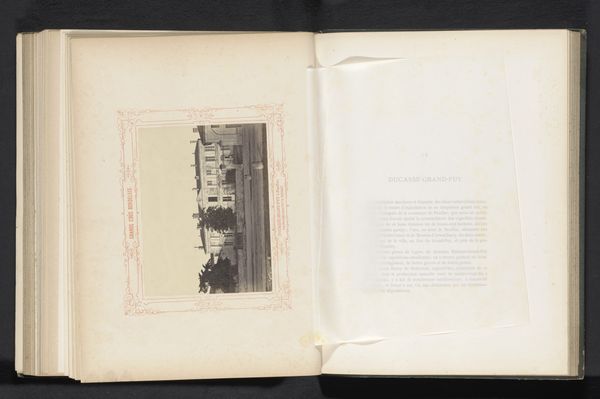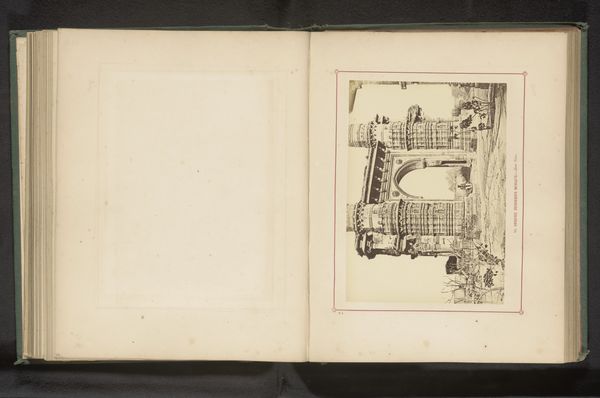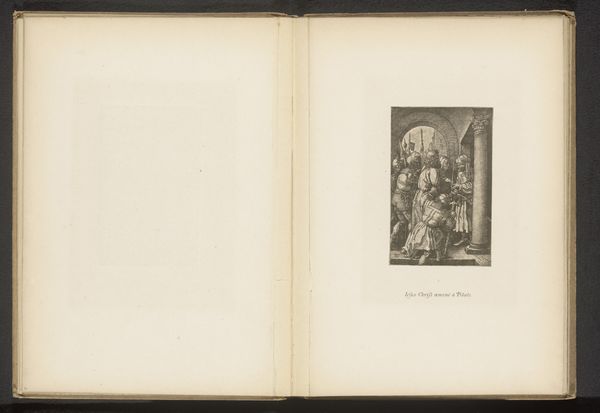
print, photography, collotype
#
medieval
# print
#
appropriation
#
landscape
#
photography
#
collotype
#
monochrome
Dimensions: height 120 mm, width 85 mm
Copyright: Rijks Museum: Open Domain
Curator: This image captures the grafmonument, or funerary monument, dedicated to Maarten Tromp, located in the Oude Kerk, or Old Church, in Delft. While the precise date of this print isn't specified, we know it predates 1894. It’s rendered as a collotype print, showcasing a high level of detail in its monochrome palette. Editor: My initial impression is one of austere grandeur. The monument appears both imposing and remote, partially due to the collotype technique which, through its subtle gradations of tone, evokes a solemn mood. Curator: It's interesting to think about what the photograph omits: context! Knowing it's in the Oude Kerk, we can assume the monument's design and placement speak to a complex narrative around Dutch naval power, religious symbolism, and societal values in the Early Modern period. Editor: Absolutely. Consider the allegorical figures that flank the central panel. While their exact identities may be obscured in this image, they likely embody virtues associated with Tromp and maritime dominance: Justice, Courage, Prudence, something along those lines. They borrow classical imagery to lend prestige to this national hero. Curator: Also consider the potential power dynamics embedded in the choice to commemorate Tromp so elaborately, especially when viewed through today’s social justice lenses. Who is being honored and who is excluded? These choices weren't neutral, they served specific agendas, often reflective of colonial aspirations. Editor: Right, visual choices reinforce Tromp’s heroic status. Look at the iconographic programs from a psychological and cultural perspective. They work together to ensure cultural memory aligns with carefully constructed notions of patriotism and authority. Curator: Looking closer, the monument also includes a very ornate, highly decorative top. One cannot help but ponder the relationship between art and power when observing works that seek to glorify individuals. Editor: Precisely. It's about how symbols—military emblems, religious imagery, and heraldic crests—continue to echo through history, shaping our present understandings of legacy. What we memorialize and how always matters. Curator: Considering all its complexities, it is hard to capture these ideas adequately with just an image alone! But looking at this photograph, the weight and impact, remain undiminished by time. Editor: Agreed. While detached from the monument's actual spatial context, even this photographic representation offers fertile ground for contemplating themes of legacy and its lasting iconography.
Comments
No comments
Be the first to comment and join the conversation on the ultimate creative platform.
